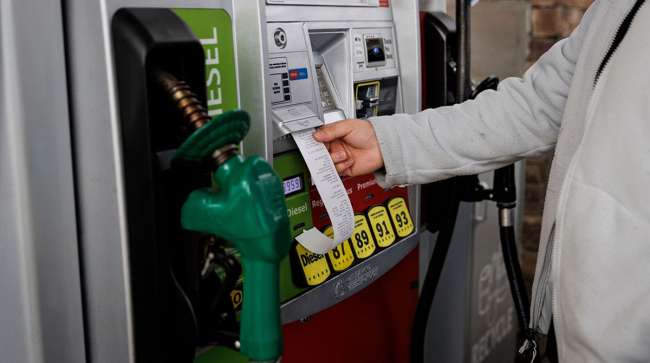Rising Inflation and Its Causes in August
Last month saw a notable uptick in inflation, with consumer prices jumping notably due to increased costs in gas, food, and travel. Specifically, the Consumer Price Index (CPI) climbed 2.9% compared to the same time the previous year. This rise marks the most significant increase since the start of the year, moving up from 2.7% in the prior month.
This surge primarily stems from higher expenses not only for gas at the pump but also for essentials like groceries, hotel accommodations, and airfares, as well as apparel and used vehicles. These widespread price hikes reflect persistent inflationary pressures affecting everyday goods and services.
Core Inflation Beyond Food and Energy
When stripping out the usually volatile food and energy sectors, core inflation settled at a 3.1% increase year-over-year, matching July’s rate and still holding above the Federal Reserve’s unofficial 2% inflation target. This suggests underlying price pressures remain sturdy, even when excluding sectors known for short-term fluctuations.
| Price Category | Year-over-Year Change | Monthly Change (July to Aug) |
|---|---|---|
| Overall Consumer Price Index (CPI) | +2.9% | +0.4% |
| Core Inflation (Excluding Food & Energy) | +3.1% | +0.3% |
| July CPI (Overall) | +2.7% | +0.2% (from June to July) |
The Fed’s Tightrope: Inflation vs Employment
As inflation edges up, the Federal Reserve faces a tricky balancing act between tackling price increases and supporting the labor market. Despite inflation nudging higher, recent data indicates a slowdown in job hiring and a slight rise in unemployment to 4.3% in August — still relatively low but enough to raise eyebrows.
Moreover, weekly unemployment claims have jumped significantly, hinting at a possible uptick in layoffs. Traditionally, the Fed responds to rising unemployment by lowering interest rates to stimulate the economy. Conversely, elevated inflation usually calls for rate hikes or holding rates steady to keep price growth in check.
Interestingly, the Fed chair has suggested a stronger focus on job numbers, which could lead to interest rate cuts soon. However, persistent inflationary pressures might slow down how quickly these cuts happen.
Monthly Inflation Trends: A Closer Look
Inflation acceleration was also visible on a monthly basis, with prices rising 0.4% from July to August, doubling the previous month’s pace. Core inflation similarly held steady at a monthly rise of 0.3% for the second consecutive month, reinforcing the narrative that inflation is not easing anytime soon.
Implications for Logistics and Transport
In the world of logistics and transport, rising inflation—especially fuel and food costs—can ripple far beyond supermarket shelves and gas pumps. Freight carriers and cargo forwarders may encounter higher operating expenses, particularly for fuel-intensive haulage and last-mile deliveries. This pushes shipping and freight rates upward, squeezing profit margins and potentially slowing down supply chains.
For businesses managing supply routes or moving bulky goods, such as furniture or vehicles, price hikes translate into tougher planning, budgeting, and execution. Platforms like GetTransport.com become vital in such scenarios, offering competitive, global cargo transport options that help dial down costs amid fluctuating expenses. From office moves to international freight forwarding, having access to affordable transport services is a game-changer during inflationary bouts.
The Bigger Picture: Why Inflation Matters in Logistics
- Fuel Costs: Increased gas prices lead to higher transportation costs across trucks, planes, and ships.
- Supply Chain Costs: As producers face higher raw material and operating costs, these expenses trickle down to logistics providers.
- Freight Pricing: Carriers may adjust shipping fees to offset inflation-driven cost increases, impacting delivery and relocation budgets.
- Consumer Demand: Inflation can alter buying behaviors, influencing shipment volumes and scheduling.
Transparency and Choice: Navigating Inflation with Smart Logistics
While reviews and reports on pricing shifts are insightful, they don’t quite replace firsthand experience. Fortunately, platforms that offer transparent pricing and a broad range of transport services can help businesses and individuals navigate inflationary pressures with greater confidence. Through GetTransport.com, users can select from various transport options worldwide, ensuring they get the best deals without overpaying or facing hidden fees.
Additionally, the ability to move diverse cargo – from parcels and pallets to vehicles and bulky household items – via a single platform simplifies logistics significantly in turbulent economic times. This flexibility is key, especially when freight budgets are tight.
Get the best offers on your cargo and freight transport needs. Book your shipment now at GetTransport.com.
Forecast for Global Logistics Amid Inflation
Globally, this inflation uptick signals challenges rather than upheaval for logistics. Cost pressures are likely to translate into more cautious shipment planning, adjustments in pricing strategies, and a shift toward more cost-effective transport solutions. While not catastrophic on its own, staying ahead of such economic developments is crucial.
Businesses and consumers alike may lean more on digital platforms that streamline freight, haulage, and courier services, making it easier to manage bulk and international shipments efficiently. This reflects how GetTransport.com aligns closely with the evolving needs of the logistics marketplace, providing affordable and reliable transport options in uncertain times.
Wrapping It Up
August’s inflation surge, primarily driven by rising gas and food prices, underscores the ongoing challenges within the economy. Core price levels remain stubbornly above target, complicating the Federal Reserve’s approach to interest rate decisions. Slowing hiring and a slight rise in unemployment add another layer of complexity to economic outlooks.
For logistics and freight sectors, these shifts translate into higher costs and the need for smarter, cost-conscious transport strategies. With fuel and food costs as key influencers, shipping, moving, and forwarding operations must adapt accordingly.
GetTransport.com emerges as a strong ally in this environment, offering a versatile and transparent platform that helps customers find affordable global cargo transportation services. Whether you’re relocating offices, shipping bulky goods, or managing supply chain deliveries, the platform’s extensive options and competitive pricing make it easier to navigate inflation’s ripple effects on transport and logistics.

